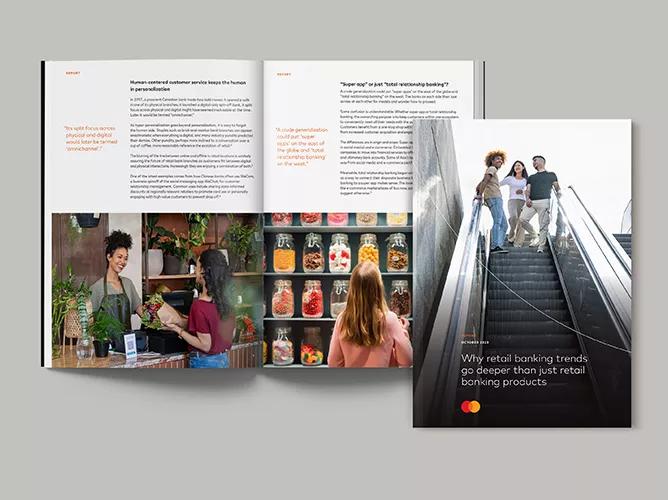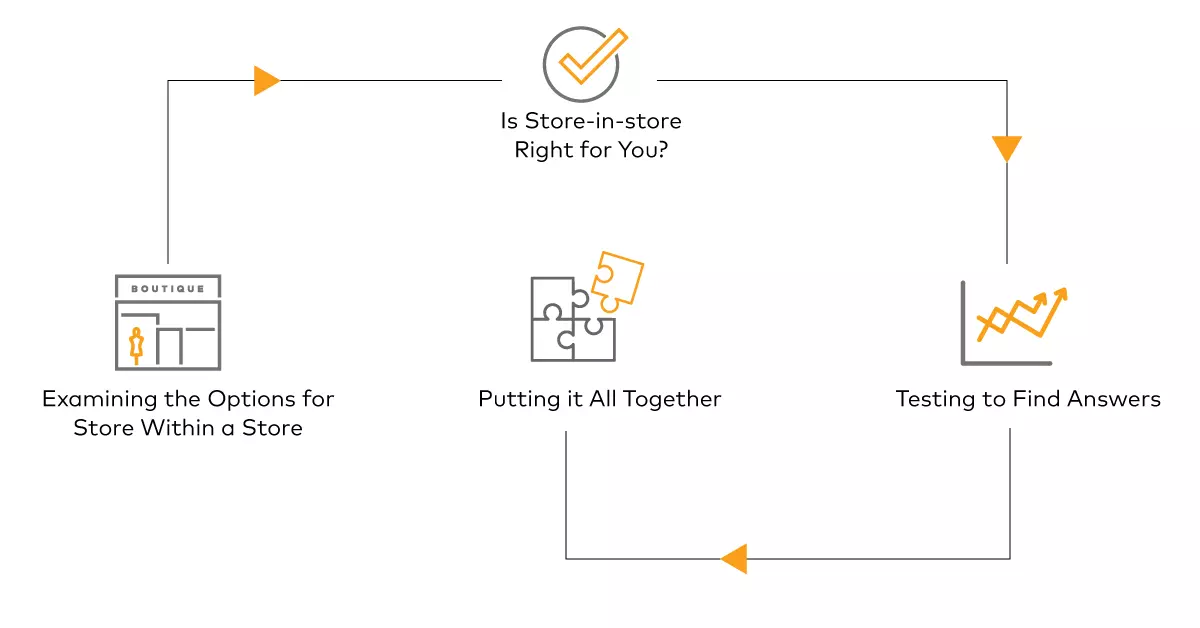It's a growing trend, but what works for one retailer might not work for you.
The idea of having a store within a store is nothing new — retailers have been making room for smaller establishments in their locations for at least a decade. But the goals are changing, and brands are now looking at the concept as a way to bolster lagging sales, boost customer experience and make better use of their retail space.
Today, most big high street brands in Europe have some form of store-in-store setup that offers customers new experiences and helps to increase footfall. But it's important for retailers to understand that there's no single best way to take advantage of the idea. From a corner display to a 2000-square-foot mini-store, there is a range of options available and it's key for retailers to understand which one is most beneficial for their business.
Examining the Options for Store Within a Store
Some retailers who have purchased or merged with another brand decide that they don't need as many locations and that it makes sense from a network consolidation standpoint to fold one into the other. This trend is visible in a number of major retailers in recent years, bringing with it cost savings as well as improved customer experiences.
Also evident is an effort to increase customer footfall by providing an experience that customers enjoy but don't necessarily expect, like food or coffee shops inside bigger retailers. These types of store-in-store solutions can give some customers another reason to visit while encouraging opportunistic purchases in those surprised by the dynamic.
One final solution sees retailers with extra space in an attractive location rent it to another brand who may not be able to afford the prime space on their own. Not only does this lower the cost of rent for both parties, but it's also another way to provide customers with a unique experience they would otherwise not have had.
Is Store-in-store Right for You?
A recent Mastercard study of major European retailers examined the value of the store-in-store concept. When asked their reasons for choosing a store-in-store solution, 25% of surveyed retailers cited network consolidation as one of the main reasons while 33% said that their aim was to increase customer offerings. Another 25% were mainly concerned with increasing footfall.
Regardless of your goals, understanding the options for store-in-store and why retailers choose them is only the beginning. Most importantly, you need to know which one will work for you, and there are plenty of factors to consider in that assessment.
Testing some options on a trial basis can reveal a huge amount of information that is crucial in helping you decide whether a store-in-store solution will work for you, and if it will, how you should implement the solution.
A program like APT's Test & Learn software allows you to drill into granular details and measure the real impact on sales and customer experience so you can quickly see what is and isn't working.
Testing to Find Answers
The first question you'll ask yourself is simple: is this a good idea or not? By testing a few different options in various locations or with different partners, you can determine — with relatively low risk — whether or not the store-in-store concept is one that lands with your customers.
Once you identify an opportunity, a second question emerges: should it be expanded? Your store-in-store idea works, but your analysis shows that it will only be effective in a particular subset of your stores, so you prioritize those locations.
But the question of location doesn't end with choosing the stores. You also have to decide where in the stores you should establish the store-in-store. The position will impact the customer experience and will also inform crucial details, like the size, variety and location of signage.
The final question is whether or not you'll keep full range inside the store-in-store. Cannibalization of the existing product line is one of the biggest worries for retailers considering this tactic. By testing an option before rolling it out to all stores, you'll be able to see if the increased footfall is worth the loss in sales, or if you should limit product overlap.
Putting it All Together
There are plenty of reasons that store-in-store solutions are becoming increasingly popular throughout the region, but retailers need to understand that there is no one-size-fits-all solution when it comes to a store within a store.
With a clear understanding of the type of solution you want and critical testing for what does and doesn't work, you can support your bottom line and provide customers with a unique experience they love.
Subscribe to the Compendium
Thought leadership and insights on today’s industry trends and innovations.









